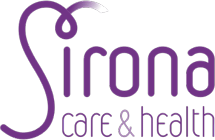Bristol Bones and Joints review 2013-14
Dr Emma Clark, Professor Ashley Blom and Professor Sarah Hewlett reflect on the Bristol Bones and Joints Health Integration Team's (HIT) work in 2013-14.
- 27th August 2014
Dr Emma Clark, Professor Ashley Blom and Professor Sarah Hewlett reflect on the Bristol Bones and Joints Health Integration Team‘s (HIT) work in 2013-14.
The Bristol Bones and Joints HIT covers three disease areas: osteoarthritis,
osteoporosis and rheumatoid arthritis. Over the last year we have identified
three overarching themes: information technology, patient and public
involvement and patient self-management.
Analysis of the National Joint Registry undertaken by the
University of Bristol has shown that cemented hip replacements have lower
failure rates than uncemented hip replacements in the first ten years after
surgery, and are likely to last older patients the rest of their lives. Our
main achievement in osteoarthritis has been to implement these findings to
increase the proportion of older patients receiving cemented hip replacements
from 40 to 92 per cent across Bristol. This has resulted in better outcomes for
patients and a reduction in costs at North Bristol NHS Trust of £170,000 per year.
The West of England Academic Health Science Network (WEAHSN) has chosen to take
this project forward on a regional scale.
In rheumatoid arthritis we have implemented standard drug
monitoring programmes across the city, and in osteoporosis we have developed
patient-based quality indicators for the pan-Bristol bone-densitometry DXA scanning
service.
This year we have also focussed on communication across
groups and across Bristol. We have held a number of meetings with the AHSN and
the first of a series of workshops, each held at a different NHS Trust in the
region, is planned for May. We recently ran a very successful second patient
forum to decide priorities for musculoskeletal healthcare from the patient
perspective. We also held an inaugural meeting for healthcare professionals and
patients working to support self-management. We are starting work to engage
with commissioners. In the near future we will be appointing a senior
musculoskeletal trainee to help develop a ‘single point of entry’ website for
patients, clinicians and researchers across Bristol who want local information
about musculoskeletal disease, healthcare pathways or research.






